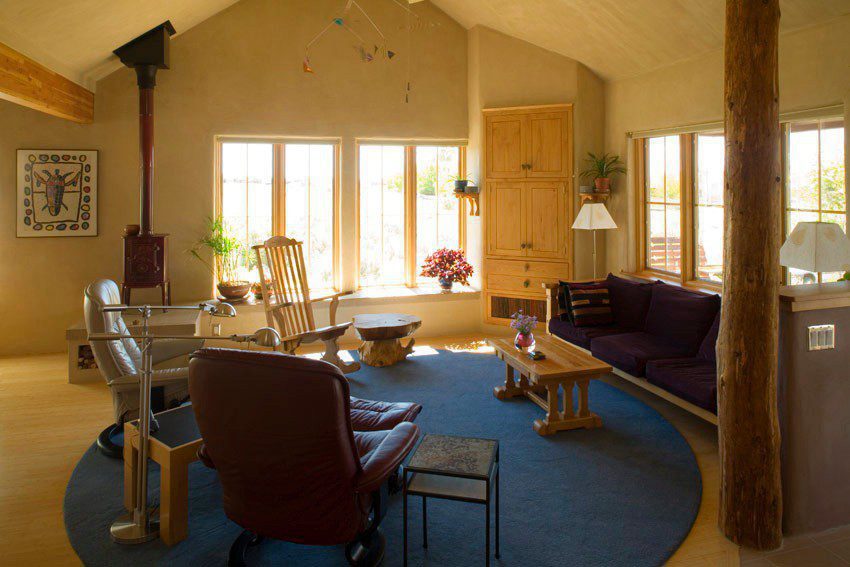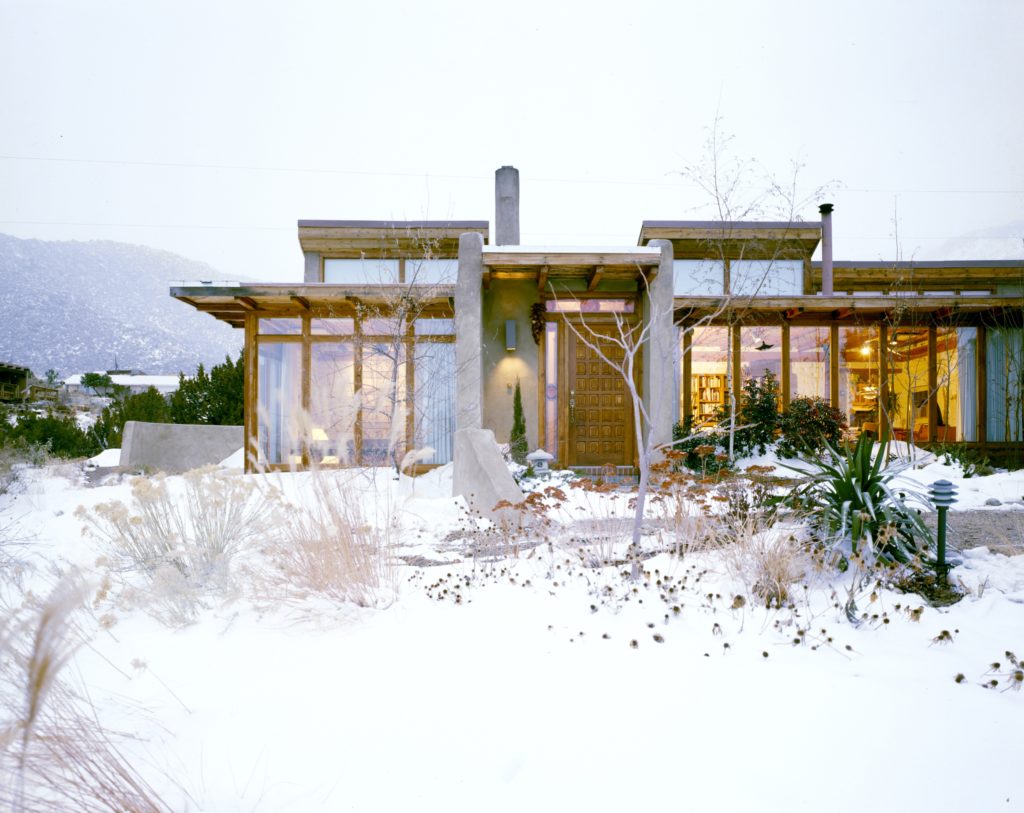
A fundamental component of our design philosophy at Sunlight Homes is designing with the sun; it’s why we chose our name after all! Our homes are designed to welcome natural light where and when it is wanted and to shade spaces where and when it is not. All aspects of our homes are designed with beneficial natural light in mind, starting with the fundamental layout, orientation and massing.
When possible, we orient our homes with the long axis facing south to minimize east and west exposure and maximize southern exposure. We do this for more reasons than just passive solar heat gain. East and west light can be bothersome while the sun is rising and setting. It not only creates overheating issues in the summer, but can also make a space unpleasant when the sun is shining in your eyes. Covered porches on the east and west act as deep overhangs and help keep the harsh sun at bay. Having both east and west porches also provides a sunny or shady outdoor space no matter the time of day. When east and west facing windows are needed and cannot be sheltered by a porch or plantings, we specify windows with special coatings that block most of the unwanted solar heat gain.
In response to how you live, we also position the rooms in your home to make most of the sun. For example, early risers might prefer the spaces they occupy in the morning to be on the south east side of the house, while night owls might prefer their bedroom tucked away so they are not bothered by morning light. A computer room might be best situated on the north side to avoid glare, while a child’s play area might be best on the bright southern side.
Natural light not only serves a purely functional purpose but can also be used to create wonderful architectural environments. Dappled light filtering through a trellis can create a great transition from inside to out. The glimpse of a sunny room from the entryway can lure you into a home. Shadows cast by interior beam work can create an exciting, dynamic environment. Using natural light as a design element can make an otherwise average space something exceptional. It just requires a bit of extra thought.
Views vs Natural Light
It’s not uncommon for there to be a conflict between capturing scenic views and beneficial natural light. It is all too common to see a house designed with only views in mind while completely ignoring the play and presence of natural light. Finding a good balance between these two potentially competing priorities can be tricky, but it is possible with careful consideration. Orienting a large wall of windows to the east or west to capture a view makes no sense if that space gets sun bleached and is uncomfortable to occupy. Ideally, a home should judicially capture desired views while still being well lit, comfortable, and energy efficient.
Sunny Outdoor Spaces
Designing with the sun extends beyond the interior of the home. Creating a variety of positive outdoor spaces oriented in different directions ensures that, regardless of the time of day, there will be a pleasant place to enjoy fresh air. East and west orientations are the most preferable for covered porches as they block the house from harsh morning and afternoon sun while not blocking the beneficial southern sun. The south side of a home can be the perfect place for an uncovered deck and yard. Sometimes, a well oriented outdoor space can also be the best way to capture a view without compromising the spacial quality or energy efficiency of the home.
East and west orientations are the most preferable for covered porches as they block the house from harsh morning and afternoon sun while not blocking the beneficial southern sun. The south side of a home can be the perfect place for an uncovered deck and yard. Sometimes, a well oriented outdoor space can also be the best way to capture a view without compromising the spacial quality or energy efficiency of the home.
Skylights
While skylights are sometimes used to bring natural light into spaces that would otherwise be dark, they have some significant drawbacks. The biggest drawbacks are that they function in opposition to passive solar design by allowing direct sun and unwanted heat into the home in the summer, and leak heat without providing much solar gain in the winter. For these reasons, we minimize the use of skylights in our homes. In addition to the thermal issues with skylights, water leaks are always a concern with skylights. Fortunately, modern skylights such as the Velux skylights supplied in our Component Package come with very good flashing kits that are guaranteed not to leak, if installed correctly.
Clerestory Windows
Clerestory windows are built up high, typically above the line of sight. If a home must be oriented in such a way that south facing exterior walls are limited, it is possible to incorporate clerestory windows into the roof to bring in natural light and solar heat. Clerestory windows can bring south light and warmth into north rooms and are also a good option where privacy is a concern. Clerestory windows incorporated into a dormer or other similar roof feature are preferred to skylights as the glass is vertical rather than diagonal or horizontal. This allows overhangs to shade the windows in the summer while allowing in the winter sun. Clerestories cost more, but in the right situation, it's worth the expense. They have a distinctive architectural style that must be integrated into the design of the home. Clerestories remain an effective strategy for certain passive solar home design situations and have stood the test of time.
